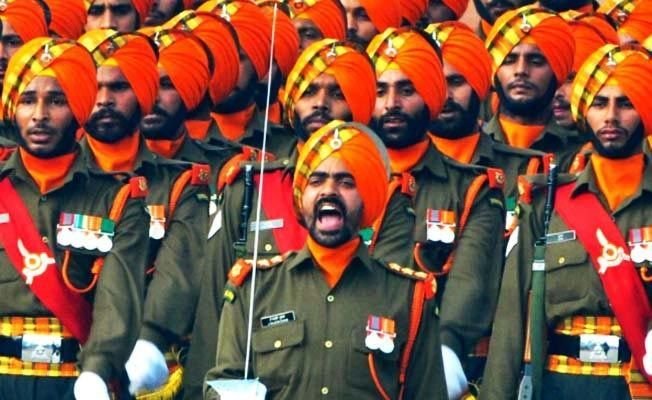– Anushka Sengupta Sharda Peeth, situated in the Neelum Valley of Pakistan-Occupied Kashmir (PoK), is one of the oldest surviving centers of learning and spirituality in the Indian subcontinent. It is considered as one of the 18 Maha Shakti Peethas which holds great reverence in Hinduism and is also an ancient University. Sharda, derives its […]Read More
Understanding the Backbone of India’s Defense: Infantry, Armoured, Artillery &
-Arushi Kastwar India, with its extensive geography, agitated frontier, and changing security threats, depends on one of the world’s biggest and most professional armies. At the center of its defense is the Indian Army — a ground force that is an emblem of discipline, gallantry, and national sovereignty. Though the Indian Army is a unified […]Read More
-Khirabdhi Tanaya Gour Para SF Regiments: Inside India’s Most Elite Fighting Force Few military units evoke the kind of respect and awe that India’s Para Special Forces (Para SF) do. With a reputation built on grit, daring operations, and unbreakable willpower, the Para SF is the tip of the spear for the Indian Army—tasked with […]Read More
-Trushti Dand Formation and Historical Background (1846–1857) The Sikh Regiment is one of the oldest and most decorated infantry regiments of the Indian Army. Its origins trace back to 1846, following the First Anglo-Sikh War, which ended with the British East India Company defeating the Sikh Empire. Recognizing the martial prowess, discipline, and courage of […]Read More
-Trushti Dand The Rajput Regiment is one of the oldest and most prestigious infantry regiments of the Indian Army. Its roots can be traced back to the 18th and early 19th centuries under the East India Company, which recognized the fighting spirit and loyalty of Rajput warriors. Many Rajputs had served in princely armies and […]Read More
-Trushti Dand Origins and Early Recruitment (1814–1857) The Gorkha Regiments trace their origins to the Anglo-Nepalese War of 1814–1816, which ended with the signing of the Treaty of Sugauli. Although the British East India Company emerged victorious, they were impressed by the extraordinary valor and military discipline of the Gorkha warriors. As a result, the […]Read More
From Colonials to Guardians: The Evolution of Indian Army Regiments
-Arushi Kastwar As the sun went down on the British Empire in 1947 and India awakened to independence, it did not inherit only freedom but also the intricate machinery of a colonial army. Among the deepest seeded was the Indian Army — an impressive force molded by generations of British imperial rule. But within a […]Read More
~Anushka Sengupta India’s naval force is part of the Indian Armed Forces competing with other two major defense forces of the country and operates by the motto “Sham No Varunah” meaning “May the lord of the water be auspicious unto us”. From ancient traditions in the Indus Valley Civilization to its contemporary position as one of […]Read More
-Arushi Kastwar In the rich canvas of Indian history, interwoven with the deeds of brave kings and visionary dynasties, the legend of Nagabhata I, the first Gurjara-Pratihara founder king, is a saga of strength, rebirth, and defiance. Hailed as the “Shield of the North,” Nagabhata I not only established the foundation of one of the […]Read More
-Arushi Kastwar The Indian Army is the world’s third-largest military force with active personnel of more than 1.2 million and reserve personnel of over 960,000. Being the Indian Armed Forces’ land-based branch, its role is not restricted to border protection but includes counter-insurgency operations, disaster relief, and United Nations peacekeeping assignments. In order to execute […]Read More









